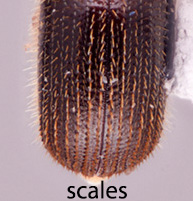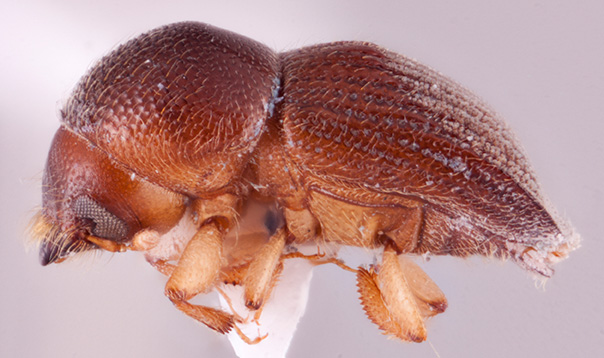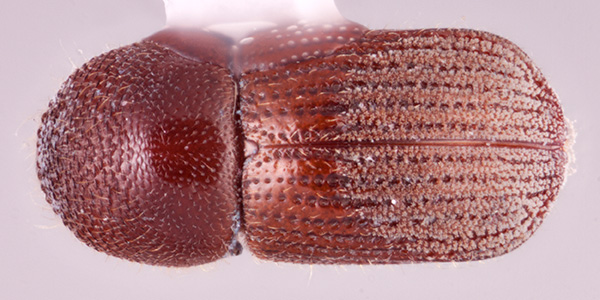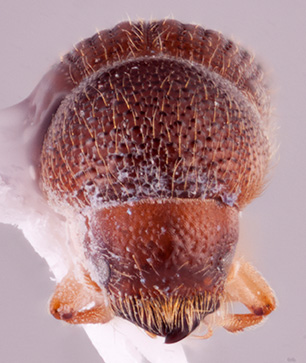Leptoxyleborus sordicauda
|
Leptoxyleborus sordicauda lateral; R.K. Osborn |
|
Leptoxyleborus sordicauda dorsal; R.K. Osborn |
|
Leptoxyleborus sordicauda declivity; R.K. Osborn |
|
Leptoxyleborus sordicauda frontal; R.K. Osborn |
Taxonomic history
Phloeotrogus sordicauda Motschulsky, 1863: 514.
Leptoxyleborus sordicauda (Motschulsky): Wood, 1980: 94.
Synonyms
Phloeotrogus attenuatus Motschulsky, 1863: 512. Wood, 1969: 119.
Xyleborus concisus Blandford, 1894b: 107. Hulcr and Cognato, 2013: 103.
Xyleborus marginatus Eggers, 1927b: 91. Browne, 1955: 354.
Xyleborus sordicaudulus Eggers, 1927b: 91. Browne, 1955: 354.
Xyleborus incurvus Eggers, 1930: 197. Wood, 1989: 175.
Xyleborus sordicaudulus peguensis Eggers, 1930: 198. Schedl, 1951a: 51.
Diagnosis
2.6−3.6 mm long (mean = 2.84 mm; n = 5); 2.15−2.5 times as long as wide. This species can be distinguished by the larger size, elytralelytral:
pertaining to the elytra
declivitydeclivity:
downward slope of either the pronotum or elytra
 extremely flat and broad; especially laterally; posterolateralposterolateral:
extremely flat and broad; especially laterally; posterolateralposterolateral:
relating to end of the side part/portion
 declivitaldeclivital:
declivitaldeclivital:
pertaining to the elytral declivity
margin elevated and carinate; and declivitaldeclivital:
pertaining to the elytral declivity
surface covered with minute star-shaped scalesscale:
a flattened seta
 .
.
May be confused with
Ancipitis puer, A. punctatissimus, Leptoxyleborus machili
Distribution
Bhutan, China (Guangxi, Jiangxi, Yunnan), India (Andaman Is, West Bengal), Indonesia (Java, Maluku, Sumatra), Japan, Laos, East & West Malaysia, Myanmar, New Guinea, Philippines, Taiwan, Thailand, Vietnam
Host plants
polyphagous (Browne 1961bBrowne 1961b:
Browne FG. 1961b. The biology of Malayan Scolytidae and Platypodidae. Malayan Forest Records 22: 1-255.)
Remarks
The species attacks large logs, smaller stems down to about 3 cm diameter, and lianes (Browne 1961bBrowne 1961b:
Browne FG. 1961b. The biology of Malayan Scolytidae and Platypodidae. Malayan Forest Records 22: 1-255.). Beaver and Browne (1978) suggest that it may be particularly attracted to sappy stems.
DNA data
Sequences available for COI and CAD.





